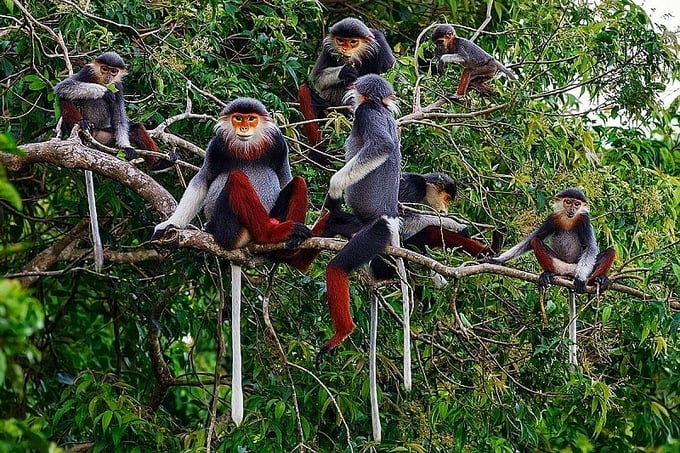December 7, 2025 | 05:51 GMT +7
December 7, 2025 | 05:51 GMT +7
Hotline: 0913.378.918
December 7, 2025 | 05:51 GMT +7
Hotline: 0913.378.918
The National Biodiversity Conservation Plan for the period 2021 - 2030, with a vision toward 2050, aims at protecting and developing ecosystems, wildlife species, and valuable genetic resources.
The overall goal of the plan is to increase the area, restore, and ensure the integrity of natural ecosystems, as well as connect existing protected areas for effective management and conservation. Additionally, it emphasizes creating a system of nature reserves, biodiversity corridors, and important wetlands, contributing to climate change response and sustainable development for the country.

Expanding, upgrading, and improving the management effectiveness of the nature reserve system.
Expanding, upgrading, and improving the management effectiveness of the nature reserve system is a specific goal of the plan. This includes establishing 61 new protected areas, transitioning 178 existing reserves (of which 7 will be upgraded and 27 expanded), and increasing the total area of protected sites nationwide to approximately 6.6 million hectares. Additionally, 13 existing biodiversity conservation facilities will continue, while nine new facilities will receive certification. Furthermore, the system will include seven new biodiversity corridors and 10 nationally important wetlands.
A system of high-biodiversity regions and ecologically significant landscapes will also be established, consisting of 22 areas spanning about 2 million hectares, and 10 ecological landscapes covering approximately 4 million hectares. These areas hold significant value for the conservation of rare species and genetic resources, as well as for protecting natural ecosystems.
To 2050, the plan envisions the effective restoration and conservation of critical natural ecosystems and endangered species. Biodiversity and ecosystem services will be evaluated and sustainably utilized, providing essential economic and social benefits, ensuring environmental security, and enabling proactive climate change adaptation, thus contributing to sustainable development.
To achieve this goal, the plan will be implemented across eight ecological regions throughout the country, including the Northeast, Northwest, Red River Delta, North Central, South Central, Central Highlands, Southeast, and Mekong Delta regions. This regional division allows each area to carry out conservation activities suited to local ecological characteristics, facilitating flexible and effective biodiversity conservation solutions.
Eight key solutions are proposed, encompassing policy mechanisms, training and capacity building, finance and investment, community awareness and education, international cooperation, implementation and monitoring.
One crucial solution is to promote scientific research on the conservation and sustainable use of biodiversity. This research will focus on developing models for breeding and reintroducing wildlife, conserving endemic and endangered species, and preventing the decline of species at risk of extinction.
The application of remote sensing technology and geographic information systems (GIS) in monitoring is also emphasized to ensure transparency and effectiveness in managing conservation areas. A model for community involvement in conservation will be developed and expanded to help the local understands and contributes to biodiversity conservation efforts.
Additionally, the enforcement of biodiversity conservation laws will be strengthened, especially for organizations, individuals, and communities living in areas with high biodiversity.
Translated by Kieu Chi
/2025/12/02/2629-3-141849_60.jpg)
(VAN) Based on its large-scale planted forests, several rubber enterprises have proactively conducted greenhouse gas emission inventories in preparation for entering the forest carbon credit market.

(VAN) MAE is leading in developing a national rare earth strategy, which will be submitted to the competent authorities for promulgation in early 2026.
/2025/12/02/4006-4-092040_652.jpg)
(VAN) The model of converting low-efficiency rice land to aquaculture in many localities has helped increase incomes by 5 to 15 times, improve the environment, and form new fisheries economic zones.

(VAN) Funded by ACIAR, Project FST/2020/123 focuses on measures to prevent harmful alien species, thereby protecting forests from invasive threats.

(VAN) The National Assembly's Supervisory Delegation pointed out solutions for the blue economy, circular economy, environmental protection, and technology application for sustainable marine governance.

(VAN) Lao Cai’s forestry sector is stepping into the spotlight with a series of pioneering initiatives in forest management, monitoring, and sustainable development aimed at generating carbon credits.

(VAN) The Provincial Competitiveness and Governance Index (PCGI) is a tool designed to reflect the quality of local governance.